Supporting your employees nowadays is crucial to the business. Helping them meet work goals and objectives can provide better work satisfaction and ultimately benefit the business in its general success.
Tracking and managing employee OKRs is a great way to see visible improvements for all your staff members. Every employee plays a key role in the organization, from those who sit on your reception desk to your managing directors. Every single employee is important and can influence the company’s success positively.
What are OKRs? How do they benefit your business and its employees? In this article, you’ll get a good understanding of what OKRs are, how to track and manage them with your employees, and their benefits.
What you’ll get from this article
- What you’ll get from this article
- What are OKRs?
- The formula of OKR
- What types of OKRs are there?
- How to track and manage employee OKRs
- Why is it important to track your OKRs?
- Tips for tracking your employee OKRs
- Tools to help track and manage OKRs
- Five OKR examples
- The benefits of tracking employee performance
What are OKRs?
OKRs is an abbreviation for ‘Objectives and Key Results’. It’s a methodology that is used by teams and individuals to set some big goals that will hopefully provide some effective, measurable results.
OKRs refer to how you track the progress of those goals, align your team members, and encourage more engagement amongst your organization.
When it comes to using OKRs, they can be used for anything within the business. This could be for your office operations team and improving the general running of the building. It may be for your digital team to enhance and upgrade your social media platforms and/or website.
As a company, there are many opportunities where you can use OKRs across departments and even for individual members of staff.
For creating OKRs, Leapsome’s template is a great starting point for developing strategic alignment when it comes to the business.
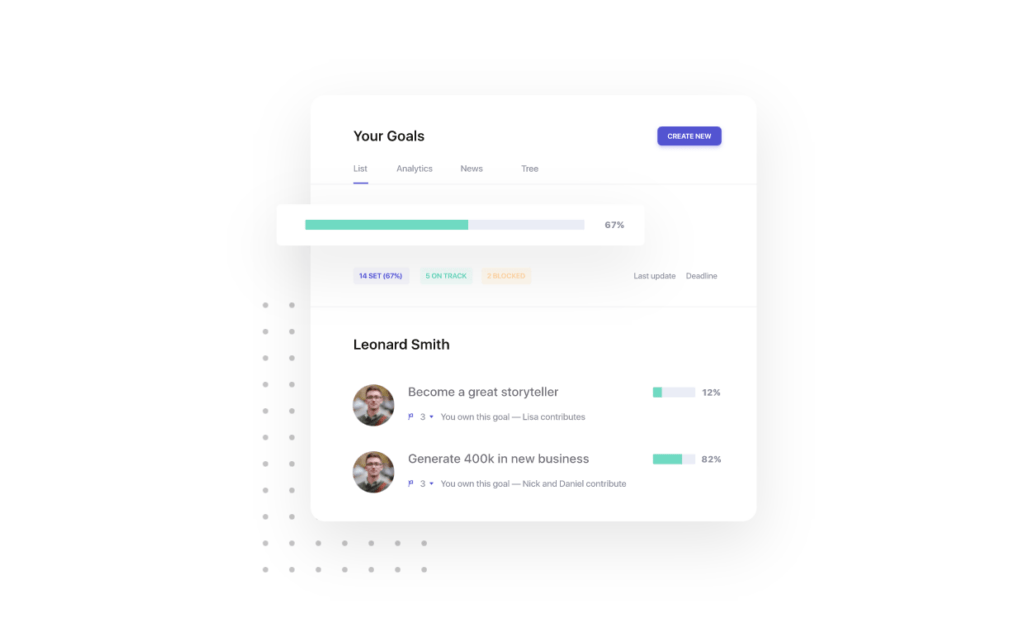
The formula of OKR
Understanding the formula of OKRs is important to help the users understand them fully. They’re typically written as an objective that is followed by a number of key results below it.
If preferred, they can also be written as a statement: Our team will (objective) as measured by (key results).
Objectives are what you want to achieve. They’re the goals and the more specific they can be, the better. These objectives are straight to the point and avoid any crossed wires.
Key Results are what you benchmark and monitor. With the right KRs in place, they’ll be effective in reaching that objective set.
These KRs are typically time-bound and aggressive in their delivery. However, while they may seem aggressive, they’re also realistic. There’s no benefit from choosing KRs that aren’t reachable with the resources or time you have available.
Once the key results have been achieved, the objective can be achieved. Despite OKRs being seemingly effective for businesses, not many of them use this methodology. In fact, only 29% of US adults in the workforce are familiar with OKRs.
What types of OKRs are there?
Before we dive into how to track and manage your employee OKRs, it’s helpful to know what types are used. OKRs typically come in three categories. These are Committed, Aspirational, and Learning OKRs.
Committed OKRs
These are commitments, as the name suggests. Usually, these would be graded at the end of the cycle and expected to receive a passing grade. Whether they’re an individual, team, or organization, everyone has agreed to the OKR being completed.
As a result, changes or adjustments are made to individuals’ resources and schedules in order for things to get done.
Aspirational OKRs
These are sometimes referred to as stretch goals. They’re called stretch goals because the pathway to completing them hasn’t been taken before. That’s why they’re aspirational! These OKRs could be long-term, transferred to different team members in order to help lengthen employee engagement.
Learning OKRs
These are intended to help the individuals or teams, learn something new and valuable. If the team isn’t sure how to proceed, then the learning OKRS can help understand what the intentions are and what is trying to be achieved.
Learning OKRs can help inform a Committed or Aspirational OKR within its next cycle.
How to track and manage employee OKRs
Now that you understand what OKRs are and the types of KRs used, how do you track and manage them?
As soon as you have your OKRs defined, it’s good to get all this information inputted into a system that can track your progress. These work management systems can be very effective in visually seeing the OKR and at what point the individual or team is at within the timeline.
Whoever is overseeing the OKRs can help set and manage objectives and can measure the work done to determine whether or not the work is on track or behind.
Tracking OKRs is undoubtedly important to do to help ensure every team member is doing their bit. Even when you’ve completed objectives, it’s good to go over the results and assess them, whether that’s individually or as a group.

Why is it important to track your OKRs?
Tracking your OKRs is important in order to keep an eye on which team members are sticking to their own goals and which ones aren’t pulling their fair share of the load. It’s very easy for this to happen when you’re not tracking and monitoring the work that’s expected for completion.
It’s also handy to know where team motivation or individual productivity might be falling short so that you can continue to inspire and encourage your team members to reach those objectives required.
Tips for tracking your employee OKRs
Tracking your various employee OKRs may seem challenging but they can actually be tracked efficiently with the right methods in place. When tracking your employee’s objectives and key results, what helpful tips are there?
Provide detailed objectives and key results
To help track employee OKRs effectively, it’s important to begin the work by creating a detailed objective and quantitative key results.
Outline the objective so that it’s clear and concise in what you’re looking to achieve, whether that’s individual, as a group, or organization. Use descriptive language so that everyone involved has a solid understanding of what’s expected of the end goals.
There are usually a few key results that would typically provide for OKRs, but that doesn’t need to be the limit, especially when the objective requires more KRs.
Consider tools and software for tracking KRs
There are lots of tools and software that you can take full advantage of when tracking KRs. For example, if you’ve got an OKR aimed at helping improve hiring processes, then specific tests can be helpful to introduce to improve the quality of hires.
One example of this could be a pre-employment DISC test by Test Gorilla, which helps the recruiters understand the hire’s personality, rather than just the experience or knowledge that they have.
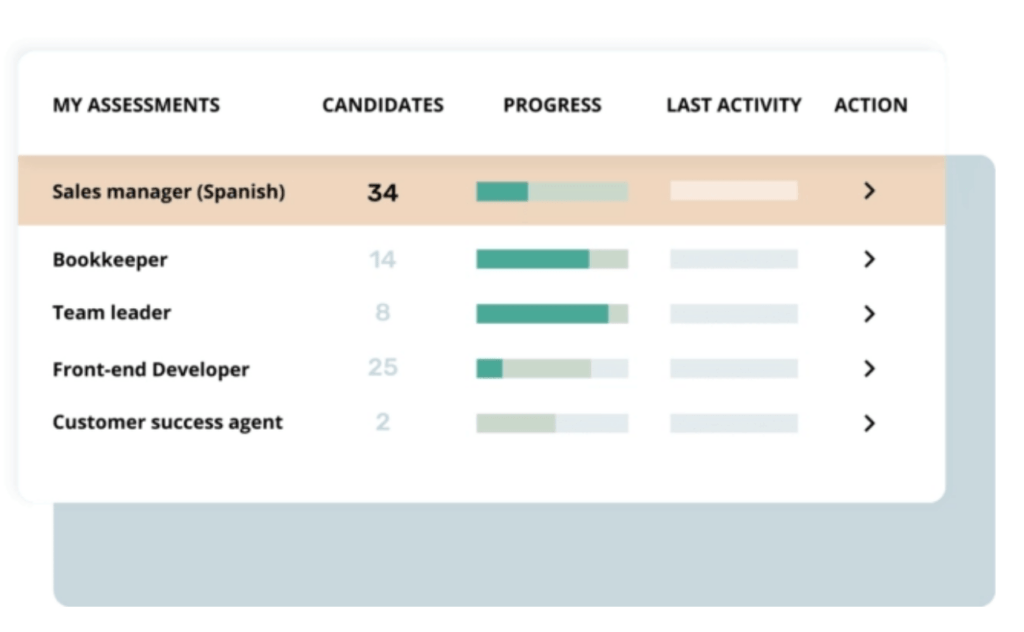
Software and tools for KRs can make tracking a lot easier and for the most part, can ensure these results are being met successfully.
Set individual responsibilities and accountability
When working on group OKRs, it’s necessary to set individual responsibilities. That means that if certain individuals aren’t pulling their weight, then accountability can be taken.
This is important because despite wanting to see the best in your employee, not everyone is going to deliver on the goals they’ve been set. Whether that’s due to a lack of motivation or taking on too much at once.
In this case, the use of software can be helpful to see everyone’s tasks and the responsibilities they have. That way, any adjustments can be made to help lighten the load for some individuals who may need help to reach their end goals successfully.
Percentage benchmarks for every KR
It’s important to set percentage benchmarks for every key result. This is because not all the key results are going to be of equal importance. Some may carry more weight than others and it might be that certain key results don’t require the same amount of effort.
It helps to calculate the team or individual’s progress better. It provides more accuracy for the OKRs that you’ve created.
Track the results on a regular basis
Above all else, track your results regularly. Setting calendar reminders can be helpful to check in on certain team members and for the overall progress of the OKR itself.
Set weekly, bi-weekly meetings whereby you can discuss your OKRs as a group where possible and where your timelines can provide it.
It’s important to also use these times to discuss key learnings along the way. What could have been improved upon? What tasks weren’t required and what other improvements can be made to the progress being made currently.
There may be OKRs where the key results fell short and as a result, it’s good to assess as a group, why this happened and what can be done so it doesn’t happen next time.
Tools to help track and manage OKRs
There are a number of tools to help track and manage your Objective Key Results. These can help to uncover and identify room for improvement when it comes to performance and engagement. There are tools for measuring performance and scoring the effectiveness of the OKRs.
With that said, here are a few suggestions to get you started when tracking and managing employee OKRs.
Timely
There may be a number of tasks that are set for your employee but when it comes to how long these tasks will take, software can be helpful to implement.
A tool like Timely is a great way to help build your OKRs at the beginning stages of the process, creating the relevant tasks required with the deadlines needed.
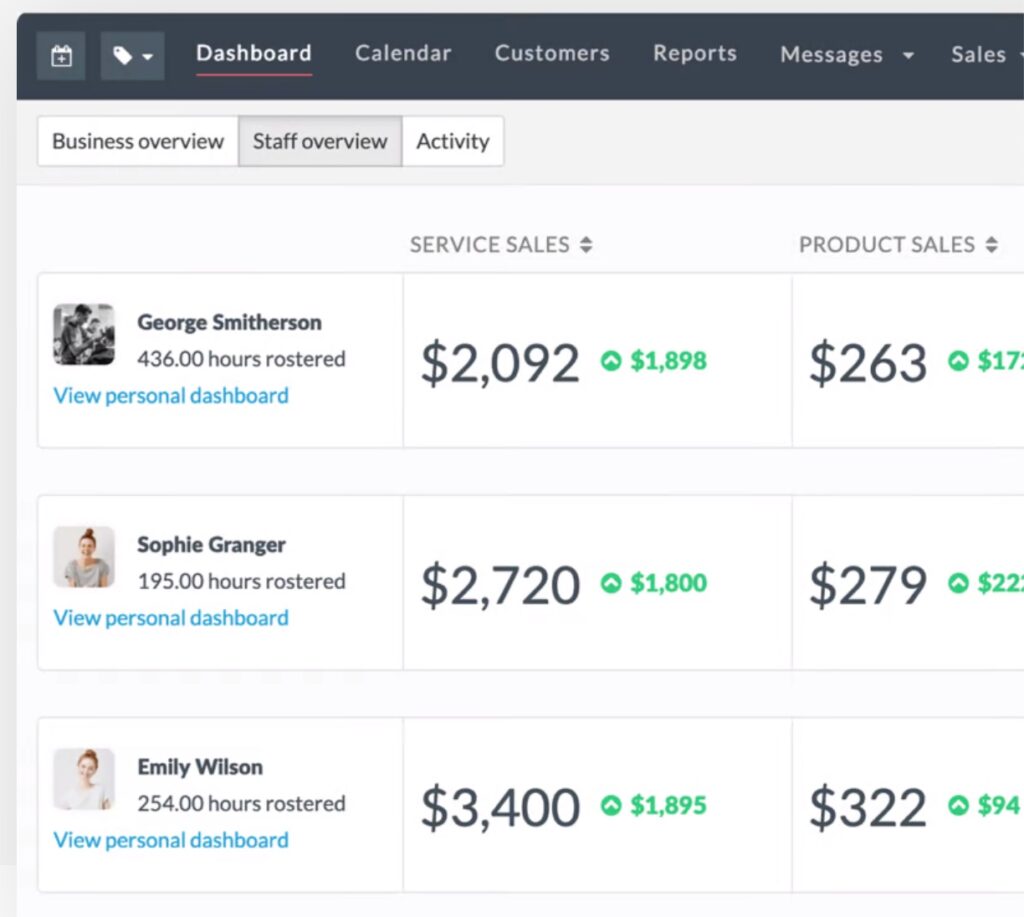
It can help measure which team members need utilizing and which tasks may require more hands-on-deck or time to complete the task.
The OKR can be monitored on a real-time dashboard, making it easy for project managers to see how well certain tasks progress and where assistance is required.
CultureAmp
A tool like CultureAmp can be effective for helping bring together the relationship of performance and engagement. It can be good in revealing what your employees have in common and creates actionable insights that can help make the most of the time that everyone has available.
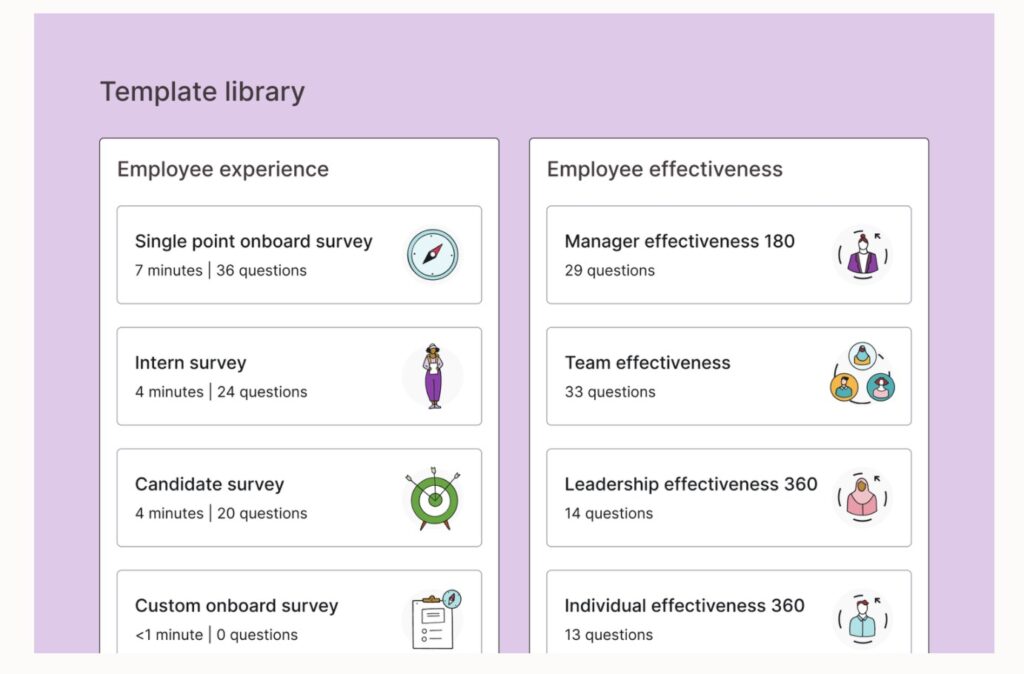
Being able to set common goals, means all your team can work together to make positive progress.
Peoplegoal
For a tool that helps improve accountability and responsibility across the team involved, Peoplegoal is the perfect platform. The tool helps set business objectives with a scorecard approach.
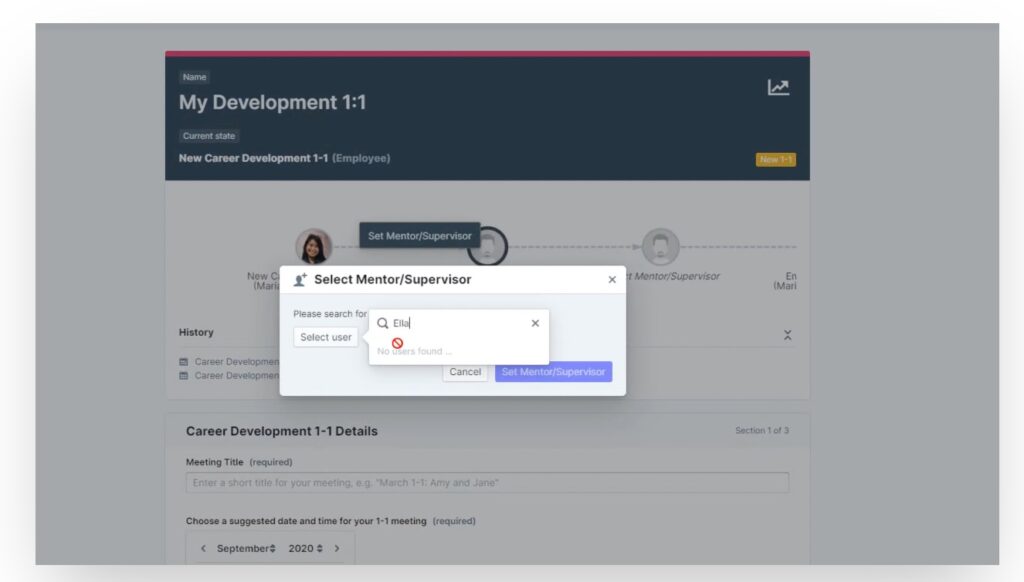
Peoplegoal helps to schedule 1:1s which can help discuss specific tasks that require more focus so that each key result is getting the attention it deserves.
Five OKR examples
If you’ve never used OKRs before, it can be helpful to have some solid examples of how they can be used for individuals, teams, and the organization as a whole.
1. Expand the company’s global reach
For a company that’s looking to reach a bigger audience, an objective might be to expand the company’s global reach. This is a great objective for businesses to rocket growth and to drive global sales.
The KRs used could be:
- Develop an effective strategy and plan.
- Achieve X of customers globally.
- Connect and establish relationships with global partners.
Expanding a company’s global reach has become more accessible because of the internet but that doesn’t mean it’s easy for all organizations to achieve. An OKR like this one can provide the right pathway and resources to help achieve this objective.
2. Improve employee workplace satisfaction
Improving employee workplace satisfaction is certainly necessary for many businesses that lack employee morale and happiness within the business. With so much of your workforce reliant on the company’s success, prioritizing your employees is critical.
The KRs used could be:
- Highlight areas for improvement in the workplace for employees.
- Set up an employee recognition platform to highlight individual achievements.
- Achieve and rate employee satisfaction of X out of 10 for every employee.
Improving workplace satisfaction is definitely a great OKR to use, especially when only 65% of employees are satisfied with their jobs in the US.
3. Improve the annual budgeting process
Money makes the world go around and for businesses, it’s an area of business that should always be thriving. However, that’s not always going to happen.
Improving the annual budgeting process can help ensure the right funds are given to each employee or department and that no overspending or underspending is done.
The KRs used could be:
- Gather insight and feedback from departmental heads.
- Review everyone’s budget proposals by X.
- Introduce financial systems that are more accurate for budgeting.
With an improved budgeting process, the right amount of spending will be made and it can therefore avoid any financial worries that some businesses can have. Having stringent processes in place for budgeting will certainly make a company more financially safe.
4. Deliver exceptional customer experience
Customer satisfaction is just as important as your own workforce’s satisfaction. With 86% of buyers willing to pay more for a great customer experience, it pays to make one of your OKRs centered around delivering an exceptional customer experience.
The KRs used could be:
- Troubleshoot Tier-1 issues within one hour.
- Create a knowledge base center for customers to use.
- Introduce chatbots for 24/7 support.
When you’re able to deliver exceptional customer experiences, it creates a ripple effect for other customers and new leads who are interested in your business. Being seen to provide a customer experience that’s unique and high-quality is going to earn you more customers.
5. Improve the efficiency of your recruitment process
Your HR department can always improve the company’s culture and that also includes the newcomers that join the business. Improving the efficiency and delivery of your recruitment process is important to get the best hires.
The KRs used could be:
- Develop the best careers pages for prospective hires.
- Improve the hiring process based on feedback from candidates.
- Utilize software for managing recruitment effectively.
Improving employee retention is key for any business nowadays. If you’re not hiring the most suitable candidates for the role, chances are you’ll be re-hiring sooner than you’d hoped. When you better the recruitment process, you’ll find you attract the best talent.
The benefits of tracking employee performance
There are many benefits that come from tracking employee performance through OKRs. Creating your OKRs may consist of a mixture of individual and group objectives.
However, each one is going to help the individual or team to smash those goals for the new quarter and beyond. Here are some of the key benefits that come with tracking employee performance.
Everyone is working towards a mutual goal
With OKRs, you’ve got everyone involved in it, working towards a mutual goal. One of the major problems with workforce alignment is communication. A breakdown in communication can lead to crossed wires over the various tasks and responsibilities everyone has.
An OKR ties everyone together, keeping all those involved, looped into what key results they’re working towards. Therefore, no confusion about who is doing what and when.
With a mutual goal, the objective is likely to be achieved in quick time, rather than it taking longer due to issues in communication.
There’s focus and alignment within teams
OKRs involving multiple employees are a good way of keeping everyone aligned within their roles. With your teams focused on what’s required, it avoids clashes with employees and duplicated work.

There are often issues with employees when it comes to focusing. Having OKRs in place can encourage every team member to pick up their weight when contributing to the key results.
This can also be done with the right software and tools to monitor each employee’s output. Where required, corrections can be made to help align your teams in the best way possible.
Empowers your employees to work hard
The power of encouragement is a lot more effective than you think. As a company, empowering your employees will help many of them stay motivated. Not only that but they’re going to want to work harder because they’re being appreciated.
Empowering your employees is going to increase the likelihood of a successful OKR. It may require more effort from those overseeing these OKRs but it’s a worthwhile investment of time and resources to get the results you require.
Improves transparency
Often, there’s not always transparency between team members with team projects, especially if it involves different departments. Where these team members need to come together for the organization’s benefit, transparency is critical.
With OKRs, they can help inform everyone of the goals that need to be met and the tasks required of each team member. Clarity in the project is necessary to keep everyone aligned and on track.
Helps achieve goals that were out of reach
Aspirational OKRs are some of the most satisfying to create and complete. While many individuals and teams will have certain desires for their role and career in general, not all those goals are within a realistic reach.
However, that can often come down to a lack of structure and focus, which OKRs can provide. When there are aspirational goals that require more than one person working on them, they can be reached with an OKR in place.
Allows to measure progress effectively
Many objectives can fall flat on their face or end up failing due to a lack of monitoring and measuring. With Objective Key Results in place, it can significantly boost the chances of that objective being met.
OKRs are a great way to achieve more for your business and to provide your employees with well-structured personal goals for their career progression. With the right OKRs in place, it can result in much success for the individual, the team involved, or the organization as a whole.
Introduce this methodology of setting goals for your business, and you will likely see some excellent growth within the organization going forward.

Freelance writer for many clients across multiple industries. Natalie has two years of copywriting experience. Natalie has a wide range of experience copywriting for web pages for businesses across many industries. She’s also an owner of two blog websites and a Youtube content creator.


